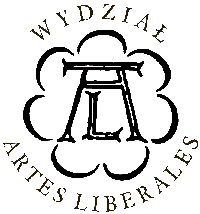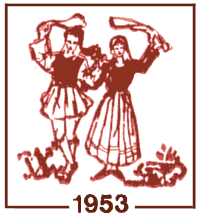| Testimony of: | icon |
| Source | Hadyna 1968: 203-204 |
| Original text | - Co to jest Langada? - To wioska macedońska, w której zachował się dziwny zwyczaj, może echo pradawnych szaleństw trackich... Z zapałem przyjąłem propozycję. Nie będę opisywał ani drogi do Langady, ani samej Langady, bo to nieważne. Sam obyczaj jest ciekawy i budzi rozmaite refleksje. Przygotowania odbywają się w nocy z soboty na niedzielę. Starsze tancerki zapalają najpierw kandilie przed ikonami świętego Konstantyna i Heleny, odmawiają modlitwy, prosząc duchy o pomoc, potem razem z mężczyznami przygotowują plac do obrzędu, znoszą bale drzewa, układają je w szachownicę, kwadraty wypełniają gałązkami lub drobniejszym drzewem, całą tak ułożoną powierzchnię niby estradę do tańca (o wymiarach kilku metrów) pokrywają znowu deszczułkami, teren otaczają święconym sznurem i czekają do poniedziałku. W poniedziałek składają ofiarę z baranka lub byka chrześcijańskim świętym. Barwna procesja ze śpiewami podąża ku miejscu obrzędu. Tam otaczają ową drewnianą estradę czy kwadratowy płaski, lecz szeroki stos - i grupa tancerek barwnym kręgiem zaczyna tańczyć przy dźwiękach trackiej liry czy surny. Głowa bractwa Tancerzy Westchnień podpala tymczasem stos, który wnet bucha wysoko jasnym płomieniem. Nie odstrasza to jednak tancerek, które zdają się wpadać w nieprzytomny trans. Z kolei wysuwa się na pierwszy plan grupa mężczyzn. Ich taniec jest bardziej dziki i fanatyczny. Akompaniament liry staje się ostrzejszy. Płomienie tymczasem pochłaniają całą estradę, potem opadają. Estrada wygląda teraz jak węgiel, błyszczący, rozżarzony czerwienią, pełen pełzających niebieskich ogników. Na to tylko czekano. Ku osłupieniu nielicznych gości oszołomieni tańcem i muzyką tancerze wbiegają boso na płonącą estradę z ikonami w rękach i tańczą dalej. Taniec staje się ekstatyczny, nieprzytomny, dźwięki liry natarczywe, obłędne. Wśród widzów ktoś mdleje, kogoś wyprowadzają, ktoś woła: Ratujcie ich, bo się spalą! Ale dzikie westchnienia, pomruki, rytmy i muzyka zagłuszają wszystko. |
| English translation | - Langada, what is it? - It is a Macedonian village, where a strange custom is preserved, maybe an echo of ancient Thracian madness... I willingly accepted the proposition [to visit]. I won't describe a road to Langada, nor Langada itself, for it is not important. The custom itself is interesting and arouses various thoughts. Preparations happen at night, late Saturday and early Sunday. Older women dancers first light candles (kandilia) in front of St. Constantine and Helen icon, they pray, asking spirits for help and then, along with men, they prepare a [village] square for a ritual. They bring wood logs, they arrange them in chequered pattern, the squares are the filled with branches and smaller pieces of wood and such a whole places floor, something like a dance floor (several by several metres) they cover again with small wood planks. The terrain around is fences with a blessed rope and everyone waits for Monday to come. On Monday the sacrifice a lamb or a bull to Christian saints. The colourful procession, singing goes to the place where the ritual takes place. There they stand around this wooden stage or - in other words - square-shaped, flat, but wide pyre - and a group of female dancers in a colourful circle starting dancing, accompanied by Thracian lyra or zurnas. The head of Sighing Dancers (Anastenarides) puts fire to the wood that staring burning with bright flames. The dancers are not scared and they seem to fall into an unconscious trance. At this moment the foreground is taken over by a group of men. Their dances in wilder and more fanatic. Lyra's voice becomes sharpers. In the meantime flames devour the stage and they fall down. The floor looks now as coal, flickering, reddened with ember, full of wandering blue flames. They all waited for it. Few guest watch in disbelief at the dancers who - dizzy with dance and music - run onto the burning stage, holding icons in their hands and continue dancing. The dance becomes ecstatic, senseless, lyra's sounds importunate, insane. Someone among the spectators faints, someone is led away, someone shouts: Save them or they will burn! But wild sighs, murmurs, rhythms and music roar it all down. |
| Time/occasion of occurence | 21st May (St. Helen and Constantine Day) |
| Region of occurence | Langada, Macedonia - Show on map |
| Function | ritual, |
| Dance name | Anastenarides |
| Comment | It is debatable whether this is a valid OiD situation, as walk more than dance. Other reservations are also present, eg. one can argue it is a purely ritual / sacral situation while dancing belongs to the sphere of profanum. |
| Symbol in Kinetography score |
|
| Tags | fire-walking, antiquity, icon, |


